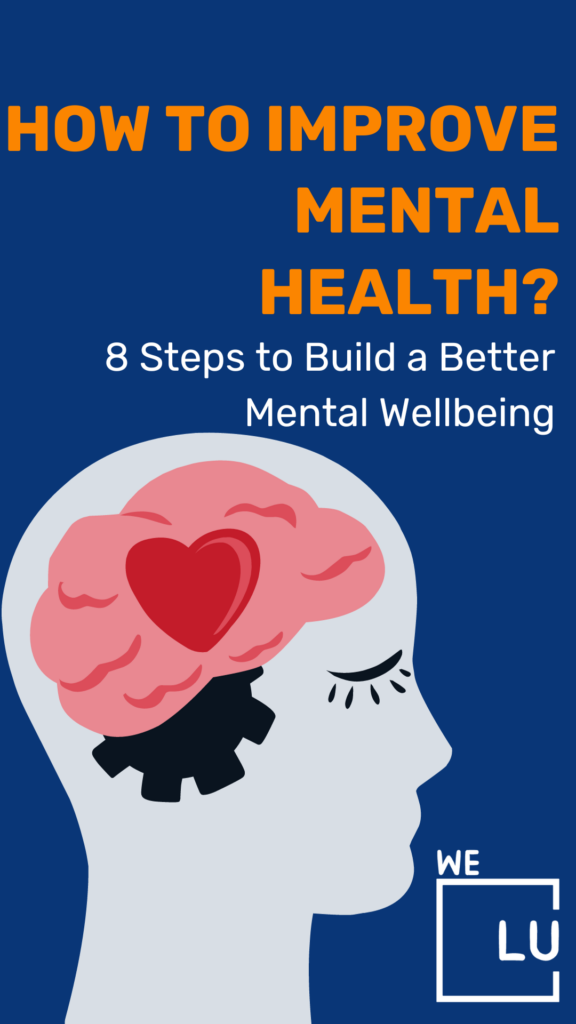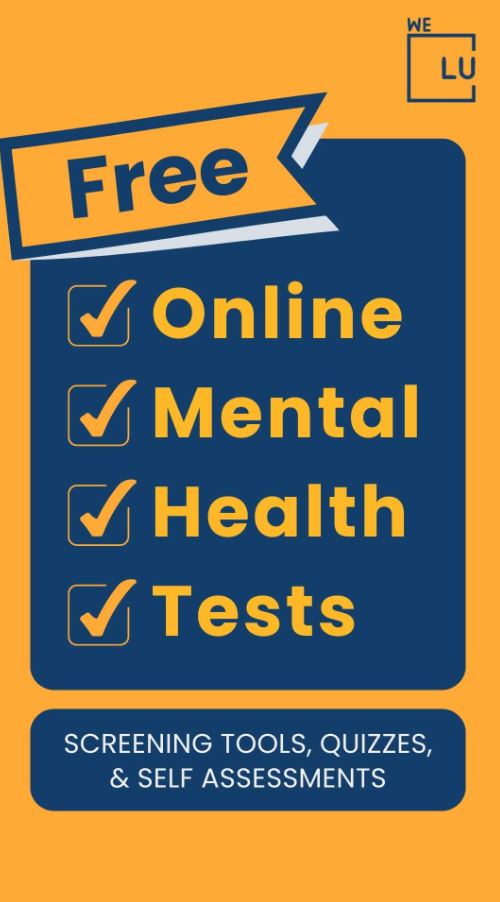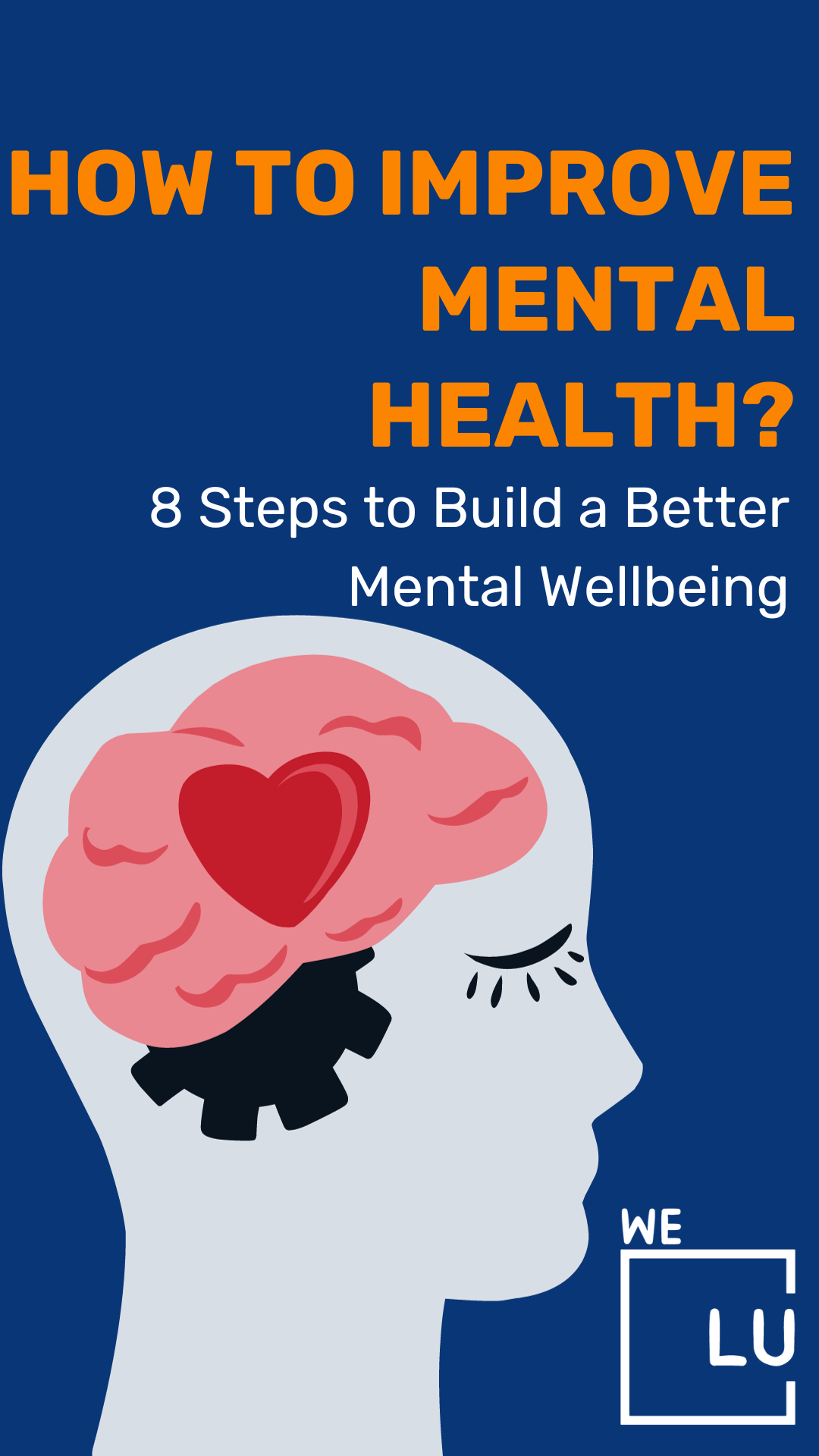Mood Disorder Questionnaire
Please take the following quiz to assess if you are experiencing signs and symptoms of a mood disorder. Ensure you answer the questions honestly and thoroughly, reflecting your current emotional state rather than how you aspire to feel. It is important to remember that seeking help is always an option, regardless of the time that has passed. Let’s begin with the “Mood Disorder Questionnaire” from We Level Up’s treatment center network.
In the presence of a mood disorder, your overall emotional well-being appears distorted or incongruent with your circumstances, hindering your capacity to function effectively. You might experience intense sadness, emptiness, or irritability (depression) or encounter alternating periods of depression and excessive happiness (mania).
Some common behavioral symptoms of having a mood disorder include:
- Feeling lethargic.
- Diminished interest in activities that once provided pleasure.
- Challenges in maintaining concentration or focus.
Please complete the free Mood Disorder Questionnaire to gain insights into your circumstances. This concise Mood Disorder Questionnaire aims to identify behavioral patterns that may indicate a tendency toward having a mood disorder. While it can provide valuable information, it is essential to note that it is not intended as a comprehensive diagnosis or for diagnosing a specific type of mood disorder. Depending on your responses, you may receive a potential indication of having a mood disorder. If so, we are here and prepared to offer assistance. However, consulting with a healthcare professional for a clinical diagnosis is crucial. Please feel free to contact us 24/7 with any questions, and rest assured that no obligations are involved.
Take Our Free Mood Disorder Questionnaire MDQ
Take Our Mood Disorder Questionnaire Online Confidential Results
The Mood Disorder Questionnaire (MDQ) is a screening tool designed to help identify individuals who may have bipolar disorder, including bipolar I or bipolar II disorders. It is a self-report questionnaire that assesses the presence of symptoms related to mood disorders. The MDQ is often used in clinical settings and is not a diagnostic tool on its own but can be a helpful component in the diagnostic process.
*By taking this free quiz, you may obtain your results online and in your email box. You’ll have the opportunity to opt-in to learn more about your symptoms, talk to a mental health consultant and join our newsletter. Rest assured your information is private and confidential. Results, consultations and assessment are provided without any cost to you and without any obligation. If you do not wish to provide your contact information, you may omit it during your quiz. Thank you for opting in and participating. To you best of health.
Mood Disorder Questionnaire Scoring

Scoring the Mood Disorder Questionnaire involves assessing responses to specific questions to determine the likelihood of a mood disorder. The questionnaire typically assigns scores based on the severity and frequency of reported symptoms. Interpretation guidelines are then applied to categorize individuals into different risk or diagnostic groups, helping clinicians make informed assessments regarding the presence of mood disorders such as bipolar disorder.
Upon completing the Mood Disorder Questionnaire, a thorough evaluation of the individual’s responses is undertaken to assign mood disorder questionnaire scores reflecting the severity and frequency of reported symptoms. Each question is carefully weighed to contribute to an overall assessment. The scoring system serves as a valuable tool for clinicians, aiding them in categorizing individuals into distinct risk or diagnostic groups.
Interpretation guidelines play a crucial role in scoring, allowing healthcare professionals to discern the probability of a mood disorder. Depending on the cumulative score and specific thresholds, individuals may be identified as having a low, moderate, or high likelihood of experiencing a mood disorder, such as bipolar disorder.
This systematic scoring approach enables clinicians to make informed and nuanced assessments, guiding them in formulating appropriate intervention strategies and treatment plans tailored to the unique needs of each individual. Through its scoring mechanism, the Mood Disorder Questionnaire proves to be an invaluable asset in the diagnostic process, enhancing the precision and efficacy of mental health evaluations.
The Benefits Of Taking Our Mood Disorders Questionnaire
Engaging in our Mood Disorders Questionnaire offers numerous advantages for individuals seeking a better understanding of their mental well-being. Here are some key benefits:
- Early Identification: The questionnaire serves as an efficient screening tool, allowing for the early identification of potential mood disorders. Early recognition is crucial for timely intervention and improved outcomes.
- Self-Awareness: Completing the questionnaire encourages self-reflection and awareness. Respondents gain insights into their emotional states and patterns, fostering a deeper understanding of their mental health.
- Informed Conversations: The results facilitate more informed discussions with mental health professionals. Individuals can articulate their experiences more effectively, aiding clinicians in accurate assessments and personalized treatment planning.
- Reduced Stigma: By openly acknowledging and addressing mood disorders, the questionnaire contributes to reducing the stigma associated with mental health. It promotes a culture of openness and acceptance, encouraging individuals to seek help without fear of judgment.
- Personalized Support: The questionnaire results enable tailoring support and interventions based on individual needs. This customized approach enhances the effectiveness of mental health care and promotes a sense of empowerment for those seeking assistance.
- Preventive Measures: For those at risk or experiencing early signs of mood disorders, the questionnaire assists in implementing preventative measures. Proactive strategies can be employed to mitigate the impact of potential mental health challenges.
- Enhanced Communication: Sharing the questionnaire results with healthcare providers fosters better communication. It provides a structured starting point for discussions, helping individuals express their concerns and enabling professionals to offer targeted guidance.
- Empowerment: Participation in the questionnaire empowers individuals to participate actively in their mental health. It encourages a proactive mindset toward well-being, motivating individuals to make positive lifestyle changes and seek appropriate support.
- Resource Allocation: The results aid healthcare providers in efficiently allocating resources. By identifying those at higher risk, professionals can prioritize interventions and allocate resources where they are most needed, optimizing the overall effectiveness of mental health services.
- Continuous Monitoring: Periodic completion of the Mood Disorders Questionnaire allows for ongoing mental health monitoring. This proactive approach supports the management of mood disorders over time, adapting interventions as needed and promoting sustained well-being.
In conclusion, our Mood Disorders Questionnaire is a valuable tool that not only aids in the early identification of mood disorders but also promotes self-awareness, reduces stigma, and enables personalized and effective mental health support.
Once you have finished answering the Mood Disorder Questionnaire, please submit your responses and wait for the results. Sharing your test results with a professional healthcare counselor or mental health expert is advisable. If you require assistance, feel free to contact the We Level Up treatment center advocates for a complimentary evaluation and consultation regarding mood disorders. Rest assured, no obligations are involved, and your call will remain confidential and free of charge.
Get Help. Get Better. Get Your Life Back.
Searching for Accredited Drug and Alcohol Rehab Centers Near You?
Even if you have failed previously and relapsed, or are in the middle of a difficult crisis, we stand ready to support you. Our trusted behavioral health specialists will not give up on you. When you feel ready or just want someone to speak to about therapy alternatives to change your life call us. Even if we cannot assist you, we will lead you to wherever you can get support. There is no obligation. Call our hotline today.
(844) 597-1011Mood Disorder Questionnaire PDF
How Common Are Mood Disorders?
Mood disorders are relatively common, affecting a significant portion of the global population. The prevalence can vary based on age, gender, and geographic location. Here are some general observations:
- Major Depressive Disorder (MDD): Major depressive disorder is one of the most common mood disorders. According to the World Health Organization (WHO), more than 264 million people of all ages globally suffer from depression. It is a leading cause of disability worldwide.
- Bipolar Disorder: Bipolar disorder is less common than major depressive disorder but still affects a substantial number of individuals. The lifetime prevalence of bipolar disorder is estimated to be around 2.1% of the adult population in the United States, according to the National Institute of Mental Health (NIMH).
- Dysthymia (Persistent Depressive Disorder): Dysthymia is a chronic form of depression, and its prevalence is estimated to be around 1.5% of the U.S. population, according to the NIMH.
- Cyclothymic Disorder: Cyclothymic disorder, a milder form of bipolar disorder, has a prevalence of about 0.4% to 1% in the general population, according to the American Psychiatric Association.
- Seasonal Affective Disorder (SAD): Seasonal affective disorder is a type of depression that occurs at a specific time of year, usually in the winter. Its prevalence varies depending on geographical location and the amount of sunlight exposure. It is estimated to affect around 5% of the U.S. population.
- Prevalence Across the Lifespan: Mood disorders can occur at any age. The prevalence may differ among children, adolescents, adults, and older adults. For instance, depression is common among older adults, often associated with other health conditions and life changes.
Skip To:
Learn More:
- Free Online Am I Being Gaslighted Quiz & Self-Assessment
- Do I Have Postpartum Depression Quiz, Screening For PPD
- Free CIWA Score Assessment Quiz, CIWA-Ar for Withdrawal
- Free Online Drug And Alcohol Tests, Quizzes, & Assessments
- How Do I Know If I Have CHS Quiz? Free CHS Diagnosis Quiz. How To Make CHS Go Away?
- The HARE Psychopathy Checklist Test Online
- Free Online Imposter Syndrome Test, Get Quick Results
- Free Hamilton Anxiety Scale Test (HAM-A)
- PMDD Test, Do I Have Premenstrual Dysphoric Disorder?
- Anger Issues Test Free & Online Confidential Results
It’s important to note that these prevalence figures are estimates, and the actual rates may vary. Additionally, many individuals with mood disorders may go undiagnosed or untreated, contributing to the complexity of understanding the true prevalence.
Mood disorders can have a profound impact on individuals’ lives, and awareness, early detection, and access to mental health care are crucial for effective management and support. If you or someone you know is experiencing symptoms of a mood disorder, seeking professional help is recommended.

How To Know If You Have A Mood Disorder?
While self-diagnosis is not a substitute for professional evaluation, sure signs and symptoms may suggest the presence of a mood disorder. If you notice persistent changes in your thoughts, feelings, and behaviors that impact your daily life, seeking guidance from a healthcare professional is essential. Here are some general indicators that may warrant further evaluation:
- Persistent Changes in Mood:
- Depression: Persistent feelings of sadness, hopelessness, or emptiness.
- Mania/Hypomania: Unusually elevated mood, increased energy, and impulsive behavior.
- Changes in Sleep Patterns:
- Insomnia or hypersomnia (excessive sleep) that occurs regularly.
- Changes in Appetite or Weight:
- Significant changes in appetite, leading to weight loss or gain.
- Fatigue or Loss of Energy:
- Persistent feelings of fatigue, even after rest.
- Difficulty Concentrating:
- Challenges in focusing, making decisions, or remembering.
- Loss of Interest:
- Diminished interest or pleasure in activities once enjoyed.
- Feelings of Guilt or Worthlessness:
- Persistent feelings of guilt, worthlessness, or excessive self-blame.
- Agitation or Sluggishness:
- Restlessness or slowed movements and speech.
- Changes in Activity Level:
- Increased or decreased activity levels that are not typical for the individual.
- Suicidal Thoughts:
- Thoughts of death, suicide, or suicide attempts.
- Irritability:
- Frequent feelings of irritability or frustration.
- Physical Symptoms:
- Unexplained aches, pains, or other physical symptoms without a clear medical cause.
It’s crucial to remember that everyone may experience occasional mood swings or temporary changes in behavior. However, when these symptoms persist over an extended period and interfere with daily functioning, seeking professional help is advisable.
If you suspect you may have a mood disorder, consider taking the following steps:
- Consult a Healthcare Professional: Schedule an appointment with a mental health professional, such as a psychiatrist or psychologist, for a comprehensive evaluation.
- Be Open and Honest: Share your thoughts and feelings openly during the evaluation, providing a complete picture of your experiences.
- Seek Support: Reach out to friends, family, or support groups to discuss your feelings and concerns.
Remember that early intervention and appropriate treatment can significantly improve outcomes for individuals with mood disorders. If you or someone you know is in crisis, contact emergency services or a helpline immediately.
How To Treat Mood Disorders
The treatment of mood disorders typically involves a combination of therapeutic approaches, and the specific plan may vary based on the type and severity of the disorder. It’s crucial to consult with a mental health professional for a personalized assessment and treatment plan. Here are common therapeutic interventions for treating mood disorders:
- Psychotherapy (Counseling):
- Cognitive Behavioral Therapy (CBT): This is a widely used form of psychotherapy that helps individuals identify and change negative thought patterns and behaviors.
- Interpersonal Therapy (IPT): Focuses on improving interpersonal relationships and communication skills to alleviate symptoms.
- Dialectical Behavior Therapy (DBT): Particularly useful for individuals with mood disorders and comorbidities, DBT emphasizes acceptance and change strategies.
- Medication:
- Antidepressants: Commonly prescribed for individuals with depressive disorders to regulate neurotransmitters like serotonin and norepinephrine.
- Mood Stabilizers: Used in the treatment of bipolar disorders to stabilize mood fluctuations.
- Antipsychotics: May be prescribed in some cases to manage severe mood symptoms or psychosis.
- Electroconvulsive Therapy (ECT):
- ECT is considered for severe cases of depression or bipolar disorder that have not responded to other treatments. It involves controlled electrically induced seizures under anesthesia.
- Transcranial Magnetic Stimulation (TMS):
- TMS is a non-invasive procedure that uses magnetic fields to stimulate nerve cells in the brain. It is used primarily for treatment-resistant depression.
- Lifestyle Changes:
- Regular Exercise: Physical activity has been shown to have positive effects on mood and can be a valuable adjunct to other treatments.
- Healthy Diet: Nutrient-rich foods can support overall well-being, and certain dietary patterns may be linked to improved mental health.
- Adequate Sleep: Establishing a consistent sleep routine is crucial for managing mood disorders.
- Mind-Body Interventions:
- Mindfulness and Meditation: Practices that cultivate present-moment awareness can help manage stress and improve mood.
- Yoga: Combining physical postures, breath control, and meditation, yoga has been shown to have positive effects on mood and mental well-being.
- Support Groups:
- Joining support groups or engaging in peer support can provide a sense of community and understanding.
- Hospitalization:
- In severe cases, hospitalization may be necessary to ensure safety and provide intensive treatment.
It’s important to note that treatment plans are highly individualized, and what works for one person may not work for another. Close collaboration with mental health professionals is key to finding the most effective approach. Additionally, ongoing monitoring and adjustments to the treatment plan may be necessary to address changing needs over time. If you or someone you know is struggling with a mood disorder, seeking professional help is essential for comprehensive and tailored care.
How to Improve Mental Health? 8 Steps & Tips for Maintaining Your Mental Wellbeing
Video Script
8 Steps for Mental Wellbeing & How To Improve Mental Health In The Workplace
- Staying Positive.
- Practicing Gratitude.
- Taking Care of Your Physical Health.
- Connecting With Others.
- Developing a Sense of Meaning and Purpose in Life.
- Developing Coping Skills.
- Meditation.
- Relaxation Techniques.
Search We Level Up Mood Disorder Questionnaire & Recovery Resources
Sources
- [1] NCBI – Heslin KC, Elixhauser A, Steiner CA. Imposter Syndrome Test Hospitalizations Involving Mental and Substance Use Disorders Among Adults, 2012. 2015 Jun. In: Healthcare Cost and Utilization Project (HCUP) Statistical Briefs [Internet]. Rockville (MD): Agency for Healthcare Research and Quality (US); 2006 Feb-. Table 3, https://www.ncbi.nlm.nih.gov/books/NBK310986/table/sb191.t3/ tags: high functioning autism and anxiety
- [2] NCBI – https://pubmed.ncbi.nlm.nih.gov/22751995/ – Imposter Syndrome Test – Lee S, Rothbard AB, Noll EL. Length of inpatient stay of persons with serious mental illness: effects of hospital and regional characteristics. Psychiatr Serv. 2012 Sep 1;63(9):889-95. doi: 10.1176/appi.ps.201100412. PMID: 22751995.
- [3] Depression Treatment » Drug Alcohol Addiction Rehab tags: Imposter Syndrome Test
- [4] Bandelow B, Michaelis S, Wedekind D. Treatment of anxiety disorders. Dialogues Clin Neurosci. 2017 Jun;19(2):93-107. doi: 10.31887/DCNS.2017.19.2/bbandelow. PMID: 28867934; PMCID: PMC5573566. tags: Imposter Syndrome Test
- [5] NIMH – https://www.nimh.nih.gov/health/publications/social-anxiety-disorder-more-than-just-shyness tags: Therapist Fort Lauderdale
- [6] Selective Serotonin Reuptake Inhibitors – National Center for Biotechnology Information, U.S. National Library of Medicine tags: highly functioning anxiety
- high functioning social anxiety[7] ‘Anxiety Disorders’ – National Institute Of Mental Health (Nimh.nih.gov) high functioning depression and anxiety
- [8] Psychopharmacology of anxiety disorders – National Center for Biotechnology Information, U.S. National Library of Medicine signs of high-functioning anxiety in adults
- [9] Products – Data Briefs – Number 379 – September 2020 (cdc.gov) Depression – National Institute of Mental Health the sneaky signs of high-functioning anxiety
- [10] Coping with Stress – Centers for Disease Control and Prevention

